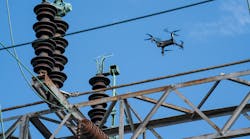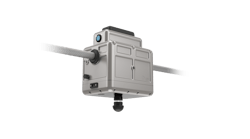Patrick Terminals is Australia’s largest operator of container terminals with state-of-the-art facilities in all major ports.
With ever-increasing container traffic, Patrick Terminals commenced a significant redevelopment program in 2005 to effectively double the terminal capacity at the ports in Sydney, Melbourne, Brisbane, and Fremantle. The expansion is expected to provide significant long-term benefits, providing not only capacity for future growth, but also establishing a new level of labor and operational efficiency. The redevelopment program will also support other company initiatives aimed at improving environmental sustainability within the ports through improved management of resources, especially energy usage in port facilities and services.
The two terminals initially targeted for capacity increases were Patrick Terminal’s East Swanson Dock facility and the Port Botany Terminal. The East Swanson Dock facility, located in the Port of Melbourne, is Australia’s largest container port, handling 1.1 Million TEU (20-foot equivalent units) of ISO shipping containers per year. The Port Botany Terminal in New South Wales, Australia, 12 miles south of Sydney Harbor, handles over 800,000 TEU per year.
In 2004, the Port Botany Terminal had six twin-lift quay cranes and electrical facilities for approximately 1000 refrigerated containers. The port also planned to install two additional twin-lift cranes in 2006 plus five twin-lift automated Rail-Mounted Gantry cranes in 2007. It was determined that the power demand would have exceeded the capacity of the existing 11-kV electrical distribution network and substation. Based on this predicted increase in electrical demand, the local electric utility, Energy Australia, made plans to upgrade the distribution network and supply the terminal at 33-kV. The terminal had also commenced an upgrade of the internal distribution network and facilities.
A similar situation existed at East Swanson Dock where six twin-lift cranes were in operation and two additional twin-lift cranes were to be commissioned in 2006. The electrical utility, CitiPower, also planned to expand the electrical distribution network serving the port.
What Did They Do?
Substation expansion plans were underway at Port Botany when Robert Reid and Associates, of Melbourne, Australia–leading consulting electrical engineers for container terminals–was asked to review the upgrade design proposal. Based on the review, the electrical plans were redesigned, resulting in a significant reduction in the overall electrical demand and minimizing required upgrades to the distribution network to the Terminal. The design changes provided significant financial savings, reducing the planned capital expenditure and the ongoing electrical demand charges incurred by the Terminals.
With significant experience and ongoing research into the electrical design and operation of container terminals, Robert Reid and Associates were aware of the high reactive power demand made by both the cranes and refrigerated containers. Robert Reid and Associates determined that adaptive VAR compensators were appropriate for this application, as they are capable of compensating for varying reactive power demands by rapidly switching capacitors in and out of the system. As a result, the peak kVA demand would be reduced, improving the overall system power factor so the new equipment could be commissioned and delaying the need to expand the electrical infrastructure. The redesign of the terminal expansion work was implemented at both the Melbourne and Port Botany Terminals, and orders were placed for S&C’s PureWave AVC Adaptive VAR Compensator.
Results
At this time, one 2500-kVAR AVC is installed at Swanson Terminal East and two 2500-kVAR AVCs are installed at Port Botany. All were connected through a step-up transformer to the 11kV distribution feeders. The systems comply with AS3000 (General Electrical Installation Standards for Australia). To address concerns over long-term exposure to the salt-spray atmosphere, the systems were constructed with copper bus, they have a closed-cycle air-conditioning system, and the enclosures feature S&C’s Ultradur® paint finish.
S&C’s PureWave AVC successfully demonstrated its ability to reduce costs and will be considered for future port upgrades.

